Ancient Tell-Tayinat Inhabitants And Climate Change Resilience – New Study
Conny Waters - AncientPages.com - An examination of two documented periods of climate change in the greater Middle East, between approximately 4,500 and 3,000 years ago, reveals local evidence of resilience and even of a flourishing ancient society despite the changes in climate seen in the larger region.
 Microscope image of Iron Age oak twig from Tell Tayinat in Hatay, Turkey. Credit: Brita Lorentzen
Microscope image of Iron Age oak twig from Tell Tayinat in Hatay, Turkey. Credit: Brita Lorentzen
A new study led by the University of Toronto and Cornell University archaeologists working at Tell Tayinat in southeastern Turkey demonstrates that human responses to climate change are variable and must be examined using extensive and precise data gathered at the local level.
The study highlights how challenge and collapse in some areas were matched by resilience and opportunities elsewhere, and shows human responses to climate change that broaden an otherwise sparse chronological framework for the northern part of the region known historically as the Levant, which stretches the length of the eastern edge of the Mediterranean Sea.
"The study shows the end of the Early Bronze Age occupation at Tayinat was a long and drawn-out affair that, while it appears to coincide with the onset of a megadrought 4,200 years ago, was actually the culmination of processes that began much earlier," says Tim Harrison, professor and chair of the Department of Near & Middle Eastern Civilizations in the Faculty of Arts & Science at the University of Toronto (U of T), and director of the Tayinat Archaeological Project.
"The archaeological evidence does not point towards significant local effects of the climate episode, as there is no evidence of drought stress in crops."
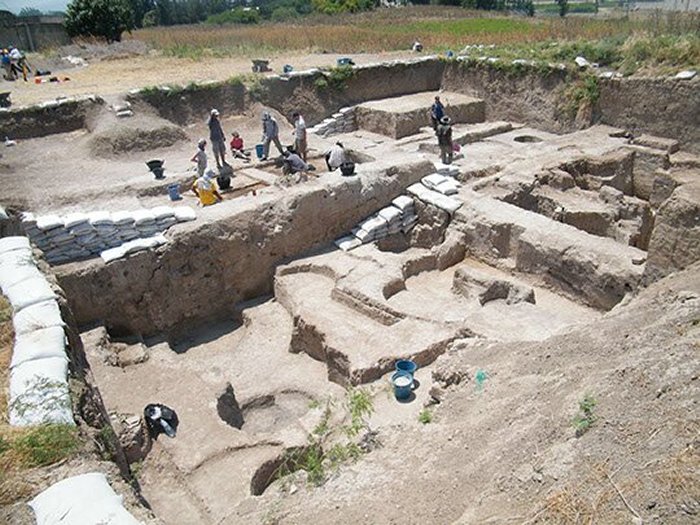 View of Early Bronze Age excavation (Field 1) at Tell Tayinat in Hatay, Turkey. Credit: Tayinat Archaeological Project
View of Early Bronze Age excavation (Field 1) at Tell Tayinat in Hatay, Turkey. Credit: Tayinat Archaeological Project
"Instead, these changes were more likely the result of local political and spatial reconfiguration."
The mid-to-late Early Bronze Age (3000-2000 BCE) and the Late Bronze Age (1600-1200 BCE) in the ancient Middle East are pivotal periods of early inter-connectedness among settlements across the region, with the development of some of the earliest cities and state-level societies. But these systems were not always sustainable, and both periods ended in collapse of civilisations/settlements, the reasons for which are highly debated.
The absence of detailed timelines for societal activity throughout the region leaves a significant gap in understanding the associations between climate change and social responses. While the disintegration of political or economic systems are indeed components of societal response, collapse is rarely total.
Using radiocarbon dating and analysis of archaeological samples recovered from Tell Tayinat, a location occupied following two particularly notable climate change episodes 4,200 and again 3,200 years ago, the Toronto-Cornell team established a robust chronological timeframe for Tayinat for these two pivotal periods in the history of the ancient Middle East.
"The absolute dating of these periods has been a subject of considerable debate for many years, and this study contributes a significant new dataset that helps address many of the questions," says Sturt Manning, Goldwin Smith Professor of Classical Archaeology in the Department of Classics at Cornell University's College of Arts & Sciences, and lead author of the study.
"The detailed chronological resolution achieved in this study allows for a more substantive interpretation of the archaeological evidence in terms of local and regional responses to proposed climate change, shedding light on how humans respond to environmental stress and variability."
The researchers say the chronological framework for the Early Iron Age demonstrates the thriving re-settlement of Tayinat following the 3,200 years ago event during a reconstructed period of heightened aridity.
"The settlement of Tayinat may have been undertaken to maximize access to arable land, and crop evidence reveals the continued cultivation of numerous water-demanding crops, revealing a response that counters the picture of a drought-stricken region," says Harrison.
"The Iron Age at Tayinat represents a significant degree of societal resilience during a period of climatic stress."
Written by Conny Waters - AncientPages.com Staff Writer
More From Ancient Pages
-
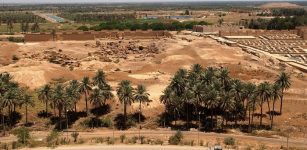 Ancient City Of Babylon Finally Declared A World Heritage Site By UNESCO
Archaeology | Jul 8, 2019
Ancient City Of Babylon Finally Declared A World Heritage Site By UNESCO
Archaeology | Jul 8, 2019 -
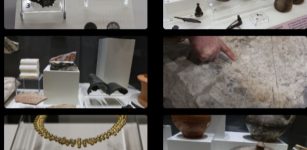 Magnificent Ancient Artifacts Found In Bulgaria Last Year Go On Display
Archaeology | Feb 14, 2023
Magnificent Ancient Artifacts Found In Bulgaria Last Year Go On Display
Archaeology | Feb 14, 2023 -
 Ancient Scandinavians Never Spoke Of Themselves As Vikings – Here Is Why
Ancient History Facts | Mar 15, 2021
Ancient Scandinavians Never Spoke Of Themselves As Vikings – Here Is Why
Ancient History Facts | Mar 15, 2021 -
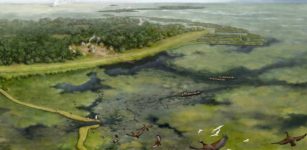 Pre-Columbian People Of The Amazon Altered Their Landscape Thousands Of Years Earlier Than Previously Thought
Archaeology | Jun 14, 2021
Pre-Columbian People Of The Amazon Altered Their Landscape Thousands Of Years Earlier Than Previously Thought
Archaeology | Jun 14, 2021 -
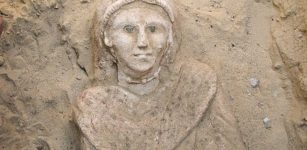 Curious Golden Figurine Of Female Dwarf Is A Puzzle
Archaeology | Feb 16, 2014
Curious Golden Figurine Of Female Dwarf Is A Puzzle
Archaeology | Feb 16, 2014 -
 America’s Mysterious Pedro Mountain Mummy And The Hidden Race Of Little People
Featured Stories | Jul 3, 2014
America’s Mysterious Pedro Mountain Mummy And The Hidden Race Of Little People
Featured Stories | Jul 3, 2014 -
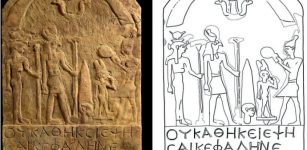 Shrine Discovered In Egyptian Temple And Evidence Of Previously Unknown Rituals
Archaeology | Oct 6, 2022
Shrine Discovered In Egyptian Temple And Evidence Of Previously Unknown Rituals
Archaeology | Oct 6, 2022 -
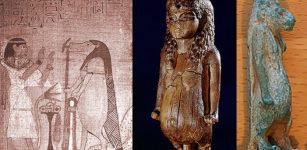 Taweret – Powerful Egyptian Hippopotamus ‘Household Goddess’ Guarded Childbirth, House, Sleep And Dispelled Evil Forces
Egyptian Mythology | Jul 16, 2018
Taweret – Powerful Egyptian Hippopotamus ‘Household Goddess’ Guarded Childbirth, House, Sleep And Dispelled Evil Forces
Egyptian Mythology | Jul 16, 2018 -
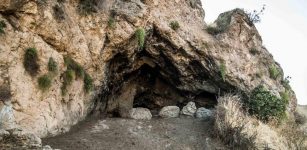 Artifacts And Remnants Of 3,000-Year-Old City Unearthed Near Great Zab River In Iraqi Kurdistan
Archaeology | Jun 5, 2017
Artifacts And Remnants Of 3,000-Year-Old City Unearthed Near Great Zab River In Iraqi Kurdistan
Archaeology | Jun 5, 2017 -
 Mazu: Chinese Goddess Of The Sea – Protector Of Fishermen
Chinese Mythology | Apr 16, 2016
Mazu: Chinese Goddess Of The Sea – Protector Of Fishermen
Chinese Mythology | Apr 16, 2016 -
 Identity Of The Shining Ones – One Of The Greatest Secrets Ever Kept From Mankind
Ancient Mysteries | Aug 9, 2018
Identity Of The Shining Ones – One Of The Greatest Secrets Ever Kept From Mankind
Ancient Mysteries | Aug 9, 2018 -
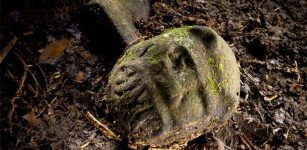 Explorers Of Lost City Of The Monkey God Contract Unusual Flesh-Eating Disease
Archaeology | Jan 22, 2017
Explorers Of Lost City Of The Monkey God Contract Unusual Flesh-Eating Disease
Archaeology | Jan 22, 2017 -
 Long-Lost Roman Bridge Re-Discovered In Chepstow River Wye Mud, UK
Archaeology | Aug 12, 2023
Long-Lost Roman Bridge Re-Discovered In Chepstow River Wye Mud, UK
Archaeology | Aug 12, 2023 -
 Submerged Qin Dynasty ‘Seaside Palace’ Of China’s First Emperor – Found
Archaeology | Jan 22, 2016
Submerged Qin Dynasty ‘Seaside Palace’ Of China’s First Emperor – Found
Archaeology | Jan 22, 2016 -
 Ancient Greeks In Ukraine: 2000-Year-Old Settlement With Previously Unknown Structures – Localized By Polish Archaeologists
Archaeology | Nov 15, 2015
Ancient Greeks In Ukraine: 2000-Year-Old Settlement With Previously Unknown Structures – Localized By Polish Archaeologists
Archaeology | Nov 15, 2015 -
 Copper: First Metal Used By Ancient Man More Than 10,000 Years Ago
Ancient History Facts | Oct 25, 2016
Copper: First Metal Used By Ancient Man More Than 10,000 Years Ago
Ancient History Facts | Oct 25, 2016 -
 Moirai (The Fates): Greek Incarnations Of Destiny And Personification Of A Single, Unavoidable Fate
Featured Stories | Aug 1, 2019
Moirai (The Fates): Greek Incarnations Of Destiny And Personification Of A Single, Unavoidable Fate
Featured Stories | Aug 1, 2019 -
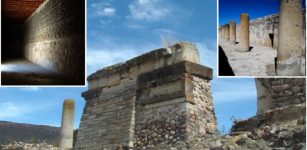 Zapotecs’ Magnificent City Of Mitla Was Destroyed By A Seismic Landslide
Archaeology | Aug 23, 2024
Zapotecs’ Magnificent City Of Mitla Was Destroyed By A Seismic Landslide
Archaeology | Aug 23, 2024 -
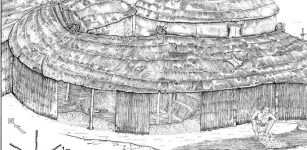 What Ancient Dung Reveals About Epipaleolithic Animal Tending
Archaeology | Sep 15, 2022
What Ancient Dung Reveals About Epipaleolithic Animal Tending
Archaeology | Sep 15, 2022 -
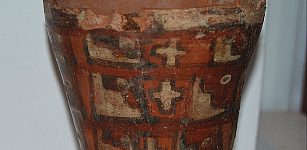 Qeros: Study Of Drinking Vessels Provide New Clues To Long Traditions Of Andean People
Archaeology | Jul 27, 2020
Qeros: Study Of Drinking Vessels Provide New Clues To Long Traditions Of Andean People
Archaeology | Jul 27, 2020
